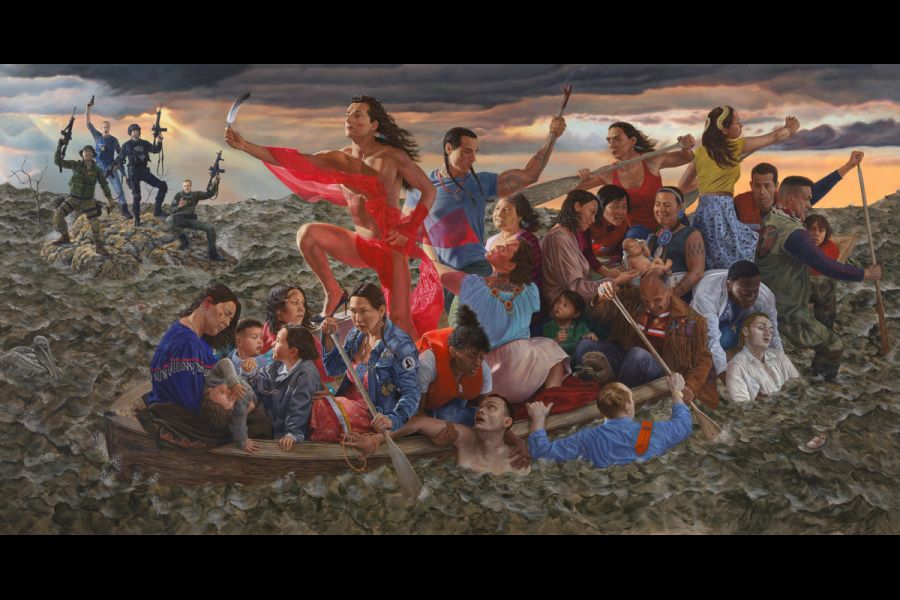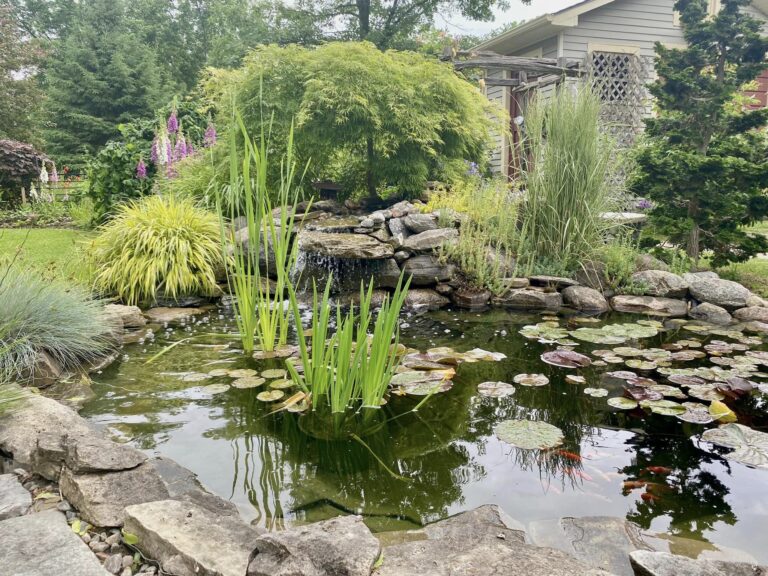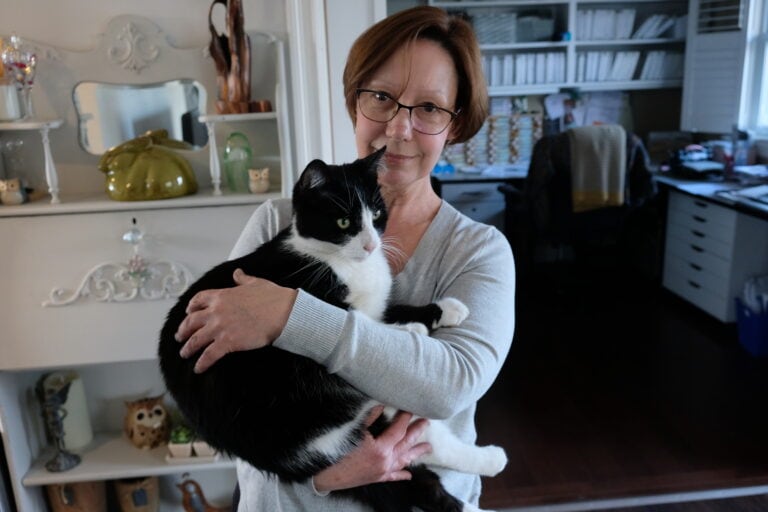Kent Monkman wields a double-edged sword that looks like a feather but is no less lethal.
In his “Mistikôsiwak,” (Wooden Boat People), the Canadian Cree artist created a grand diptych, two enormous paintings commissioned by the Metropolitan Museum in New York to grace its Great Hall.
This was an exciting opportunity for Monkman to work with the art collection of the Met and the canon of art history to reflect on what colonial history has meant to Indigenous peoples. Inspired by old paintings, contemporary experiences and his love for the language of painting, he has questioned how the artist describes grief, ecstasy and human emotion.
For years he has looked at paintings and sculptures made by settler artists who held a romantic view of Indigenous Peoples as the “vanishing race” – to which Monkman says, “We are very much alive.”
He refutes such themes of disappearance and by combining elements of Indigenous history and camp in his work, he has created the heroic persona Miss Chief Eagle Testickle, who travels through time to reverse the colonial gaze. Miss Chief is a legendary being, albeit his alter ego, who embodies Cree values, including gender fluidity, mythology and history with a playful sense of humour.
She is the hero of the monumental two paintings that reflect the Indigenous perspective and allow Monkman to bring light and lightness to the dark chapters of Indigenous experience.
Mistikôsiwak is a Cree word for when the French arrived in wooden boats and in “Welcoming the Newcomers,” refers to the current displacement and migrations of peoples around the world.
Miss Chief generously bends down to assist those arriving to North America. In “Resurgence of the People,” the painting described here, Miss Chief commands a migrant boat full of people of all ages displaced from their own lands and heading to shore in a return to their own languages and traditions.
She gestures forward with an eagle feather brandished in her outstretched arm, her strong body swathed in diaphanous red silk and wearing Christian Louboutin red-soled stilettos (a multitude of innuendo here).
The paddlers press on through a turbulent grey sea. Emanuel Leutze’s “Washington crossing the Delaware” has become the victory sail of Miss Chief. Behind her, a handsome warrior is embraced by his love, who fears he will be killed although he holds aloft a smoking peace pipe. Note the 204 tattoo on his neck (the area code for Manitoba), and a heart tattoo on his bulging bicep.
This couple echoes two Venus and Adonis paintings in the Met, one by Rubens, the other by Titian. Under his arm is a grandmother with the lip chin tattoo of traditional Cree women. Behind her three Graces, young mothers with a newborn baby, herald the birth of spring.
In the prow of the boat, two mothers surround three children, a sister restrains a young brother’s hand that clutches a rosary. Beside them a determined woman, representing the strong matriarchal position of women in Indigenous societies, paddles resolutely forward. Other strong paddlers dip their oars, including Pierre Trudeau in his famous suede fringed jacket.
A child has a hand on his knee and a beaver holding an evergreen branch sits upright in front of him. His oar is held fast by a blue-shirted white man in the water with his red tie slung over his shoulder. Two others are being rescued, the reference here being Géricault’s “Raft of the Medusa.”
An Asian man looks up with reverence to a Black woman rescuer and a barely conscious white man is being gently raised by a Black male passenger. Two rescued Latinos sit stunned in the stern.
As the boat nears shore, it passes four uniformed white men on a rock. One wears army fatigues, one police riot gear, one is a white supremacist. They brandish AK47s and pistols. One sits, smiles and gives the OK gesture.
In the water float two plastic water bottles, a subtle reminder of the shame of Indigenous communities without clean water and presciently a little girl’s pink and white running shoe. In front of the boat bobs a pelican, symbolic of spiritual travellers and although nearly wiped out by pesticides and hunting by whites, pelicans represent energy, harmony and co-operation. They cannot sink.
And in all these remarkable references in one painting, Monkman weaves stories, legends and insight and in so doing enlightens us with charm, inspiration, talent and seriousness.










